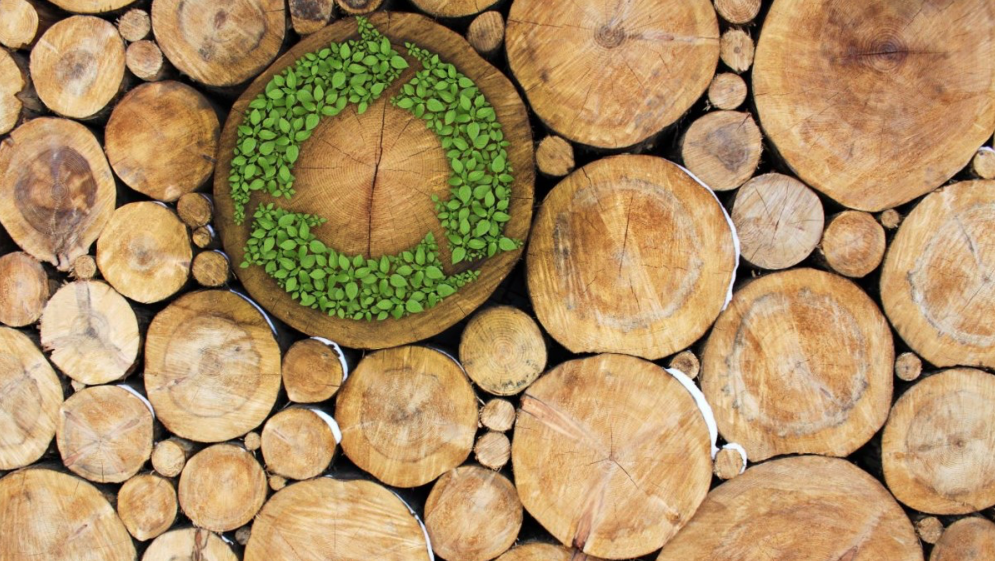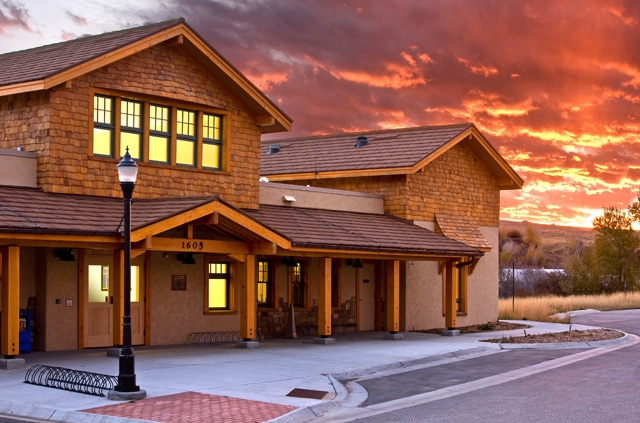GREENER PASTURES
Spearheading the green building movement in Steamboat, Sarah Fox shares her sustainable building practices.
Green building might not be new to Steamboat, but it still has a long way to go. Leading that charge is Sarah Fox, who was born and raised in Steamboat and grew up working for her family business, Fox Construction. She earned her degree in Construction Management from Colorado State University in 2005 and that’s when she became intrigued by green building and construction practices that were more sustainable. “I loved building, but wasn’t keen on the wasteful side. The idea that we could save energy and recycle building materials was exciting,” she says. “It inspired me to want to bring those practices home to our family company.”
She continued her post graduate study and became a LEED AP certified. She helped the City of Steamboat with its Green Building Initiative and is on the forefront of the newest technologies, materials, building techniques and practices in green building. It also doesn’t hurt that she’s blown more than a few of the boys away with her knowledge and experience. “I’ve been working on construction sites since I was 12 years old,” she says. Now she’s at the forefront on green building in the Yampa Valley.
The Steamboat Springs Community Center
We caught up with Sarah to learn more about the top trends in green building.
#1) It’s all about tight building.
Creating buildings that are “tight” for better insulation are becoming the norm, Fox says. “People are looking at insulation upgrades from better caulking and sealing to windows,” Fox says. “Making a building that is energy-efficient saves people money in the long run by cutting down on heat and electricity costs.”
#2) Keeping it clean inside and out with environmentally friendly finishes.
“There are a lot of options now that will improve indoor air quality in terms of finishes,” Fox says. Water based sealants for hardwood floors, and paints with low VOC (volatile organic compounds) are going to be the best choices.” She says a lot of people still want high end finishes that are more toxic, but this is another area where educating people about the long-term effects might get them thinking about their homes in a different way. “Do you want to build a sick house or a healthy house?” she asks. It’s really that simple.
#3) Insulation is king.
There are a lot of new products and building techniques that make for better, tighter insulation. By keeping hot air in and cold air out in winter (and the opposite in summer) this not only makes homes more energy efficient, but also creates better air circulation and air quality. Fox talks a lot about products that create “continuous insulation” on the exterior of a building to prevent “thermal bridging” or the escape of air. Products like zip walls and rigid foam insulation are good for tight building.
#4) From the ground up.
One place people don’t think about as a place to save energy is in their floors. “Warm board is a very energy efficient in-floor radiant heating system that saves a lot of energy,” Fox says. A plywood subfloor has a thin layer of aluminum with lines for heat tubing. “It’s more expensive up front, but the savings in heating over time really add up,” Fox says.
#5) Reuse and recycle isn’t just for plastic bottles.
“Job site recycling is something we are very conscious of,” Fox says. “We truly try to reuse and recycle as many products as we can.” The crew sorts materials just like you would your own recycling, so the landfill can better utilize the massive amounts of waste created on a job site. Fox says they sort their wood so it can be converted to wood chips and used to dampen toxic materials in the solidification basin at the dump so that they don’t become airborne. They also stock wood and give it away as firewood.
#6) All under one roof.
Cold roofing is another technique that’s evolved with green building in mind, says Fox. “We’ll do a super insulated attic or ceiling and then the roof creates another layer on top of that for air to circulate so you don’t have a transfer of heat, or heat loss.”
#7) It’s all been a huge misunderstanding.
Fox says there is a lot that people still don’t understand about green building. “People assume it’s too expensive, or that they’re not going to get their return on investment.” While LEED certification can be both expensive and time consuming, most consumers don’t have to go that far to build a more sustainable, energy efficient home. “People need to think about their savings long term, not just in the next 5-10 years, but for the life of the building. If you design it right the first time, those savings will be for 30-40 years. People need to look at the bigger picture and consider the impact their building will have on the environment in the long term.”
To contact Sarah Fox or to learn more about green building, go to www.fox-construction.com
Reproduced with permission from Steamboatsir.com



Links
Steamboat Areas
Popular Searches
Broker Associate
Popular Searches
Didn't find what you were looking for?